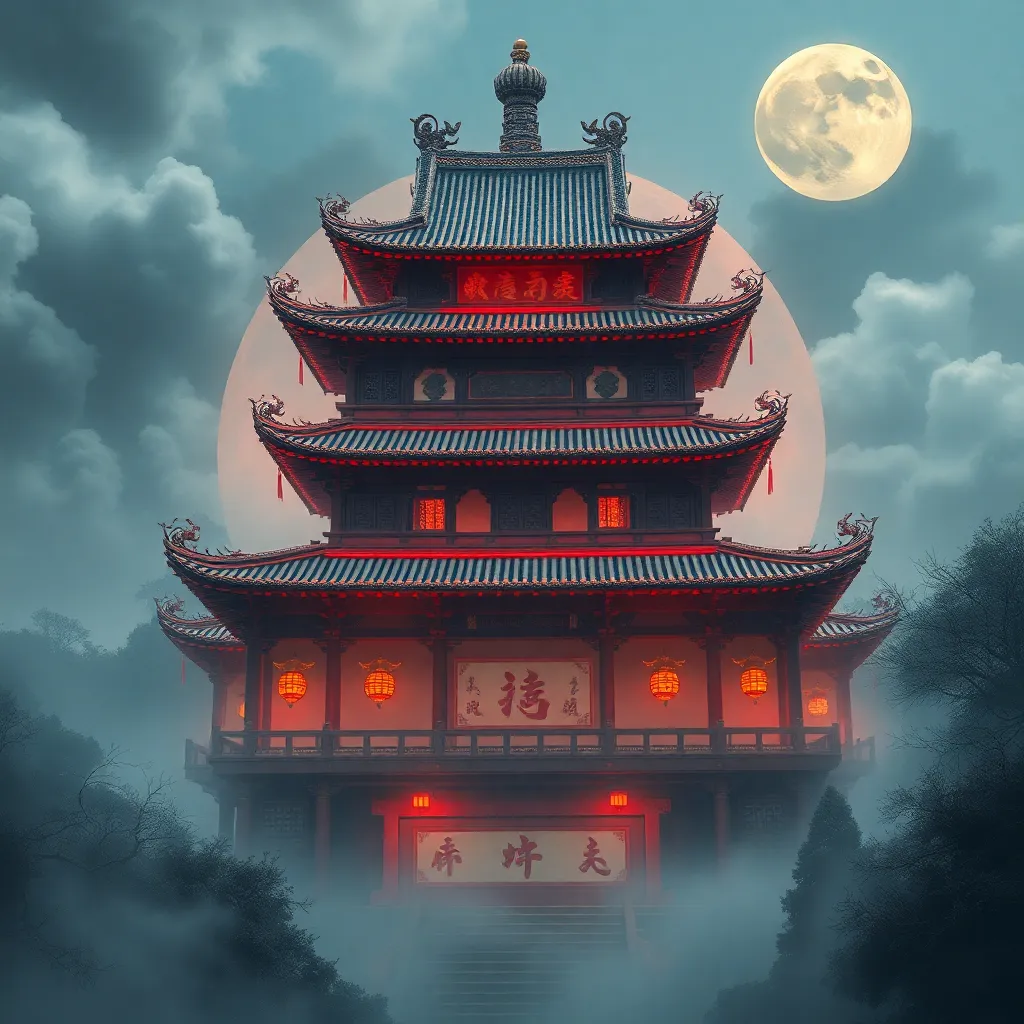The Fenghuang’s Symbolism: Harmony, Prosperity, and the Emperor
I. Introduction
The Fenghuang, often referred to as the Chinese phoenix, holds a prominent place in Chinese culture and mythology. This mythical bird symbolizes various virtues and concepts that are deeply embedded in the fabric of Chinese history. As a creature of beauty and grace, the Fenghuang represents harmony, prosperity, and imperial authority, making it a vital emblem in the cultural narrative of China.
Symbolism plays a significant role in Chinese mythology and history, serving as a bridge between the spiritual and the material world. The Fenghuang stands out as a powerful symbol that encapsulates the ideals of balance, abundance, and rightful rule, reflecting the aspirations and values of Chinese society throughout the ages.
II. The Mythical Origins of the Fenghuang
The origins of the Fenghuang are steeped in rich historical background and folklore. According to various legends, the Fenghuang is said to have originated from the primordial chaos, emerging as a creature of both fire and water. It is often depicted with a beautiful plumage, combining vibrant colors that symbolize the five fundamental elements of Chinese cosmology: wood, fire, earth, metal, and water.
In contrast to the Western phoenix, which is primarily associated with resurrection and immortality, the Fenghuang embodies a broader spectrum of meanings, including harmony and the cyclical nature of life. This distinction highlights the unique values that the Fenghuang represents within Chinese culture.
III. Symbol of Harmony
One of the most significant attributes of the Fenghuang is its representation of harmony, particularly the balance between yin and yang. In Chinese philosophy, yin and yang are complementary forces that together create a harmonious whole. The Fenghuang, often depicted in pairs with its counterpart, the dragon, symbolizes the union of these dualities.
The role of the Fenghuang in promoting peace and unity is evident in various cultural practices. Traditional Chinese weddings often feature the Fenghuang as a symbol of marital bliss, emphasizing the importance of harmony in relationships. The bird’s presence in art and decoration serves as a reminder of the need for balance and cooperation in society.
IV. Emblem of Prosperity
The Fenghuang is also an emblem of prosperity, closely associated with abundance and wealth. Traditionally, it is believed that the appearance of the Fenghuang heralds a time of good fortune and flourishing harvests. This association with prosperity has led to numerous cultural practices and rituals aimed at attracting wealth and success.
- Fenghuang motifs are commonly incorporated into home decor to invite positive energy and financial success.
- Festivals celebrating the Fenghuang often involve offerings and prayers for prosperity, reinforcing its role as a harbinger of good luck.
In addition, the Fenghuang is celebrated in various forms of artistry, including sculpture and embroidery, where its image is often seen as a blessing for abundance.
V. The Fenghuang and Imperial Authority
The significance of the Fenghuang extends to imperial iconography, where it represents the divine right to rule. Emperors in ancient China adopted the Fenghuang as a symbol of authority, often associating themselves with its majestic qualities. The bird’s imagery was frequently used in royal regalia, architecture, and ceremonial objects.
Through the association with the Fenghuang, emperors sought to legitimize their rule, portraying themselves as the bearers of harmony and prosperity. This connection reinforced the belief that a ruler’s virtue and ability to maintain balance within the realm were essential for the prosperity of the state.
VI. The Fenghuang in Art and Literature
Throughout Chinese history, the Fenghuang has been a popular subject in traditional art forms. Its depictions in paintings, ceramics, and textiles showcase its elegance and cultural significance. Artists often illustrate the Fenghuang in lavish colors and intricate designs, emphasizing its beauty and symbolic meanings.
In classical poetry and literature, the Fenghuang is frequently referenced as a symbol of grace and virtue. Poets have used the bird as a metaphor for ideal qualities such as fidelity, beauty, and nobility. Its presence in literary works often evokes themes of love and harmony, reinforcing its status as a cultural icon.
VII. Modern Interpretations and Cultural Relevance
In contemporary society, the Fenghuang has seen a resurgence in cultural relevance. As China continues to evolve, the bird remains a powerful symbol of national identity and heritage. The Fenghuang is often featured in modern art, fashion, and design, reflecting a blend of traditional values with contemporary aesthetics.
Moreover, the Fenghuang’s imagery is employed in branding and marketing, appealing to a sense of cultural pride among the populace. Its role as a symbol of resilience and prosperity resonates with the aspirations of modern Chinese society.
VIII. Conclusion
In summary, the Fenghuang holds deep significance in promoting harmony and prosperity within Chinese culture. Its rich symbolism as a creature of balance, abundance, and imperial authority continues to inspire and resonate with people today. As a lasting emblem of Chinese identity, the Fenghuang embodies the values and aspirations that have shaped the nation’s history and culture, ensuring its enduring legacy for generations to come.



